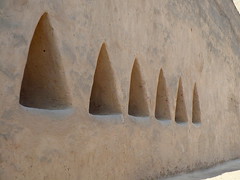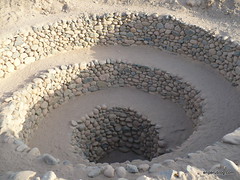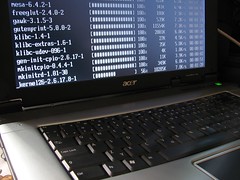Puruchuco
Part of the Lima PreColombina series
The Inca palace of Puruchuco is one of the most impressive ruins in Lima and is one of the best restored and the first to have been done so properly. It can be found seated at the foot of a cerro in the district of Ate, at the start of the Andes mountain range.
The Incas modified the original site to be used as a palace for the local administrator with his family and also as a place for the people to have audiences with him. The large building is divided into various sections – a main audience area, a living area and various storage areas.

From http://www.naya.org.ar/peru/puruchuco.htm
A – Main audience area
B – Living area, kitchens
C – Ceremonial area
D – Food deposits and work area
The style of architecture is native to the Lima area, it is a style of platforms, a large patio and inclining ramps that continued to be used by the people of the area even under the administration of the Incas. You can see much of the same in the sites of Pucllana and Pachacamac.
On the platform in the audience area, the administrator would oversea events, such as trade and grain distribution. To the side rooms of the platform, quipu and balance scales were found.
To access the rest of the building, one must pass through this platform area, making sure it remains private and not open the the public. In fact, the entire complex is surrounded by a high wall with the only access being via the main ramp and door to the audience area.
 From the long corridor that takes you from the audience area to the residence area, turning right you can climb a ramp that takes you to the ceremonial area. Here six triangular niches are cut into the wall. It is thought that the Incas had niches in their walls to place idols, but these niches are different, they are the only ones found in Lima that are triangular.
From the long corridor that takes you from the audience area to the residence area, turning right you can climb a ramp that takes you to the ceremonial area. Here six triangular niches are cut into the wall. It is thought that the Incas had niches in their walls to place idols, but these niches are different, they are the only ones found in Lima that are triangular.
Outside of the walls of the palace are a series of mausoleums that have not been restored. Here an intact burial was found. With more investigation it was found to be a quadruple burial: 2 adults (a man and a woman) and 2 children. The adult man was accompanied by offerings displayed in the site museum and linked to the time of the Incas.
This area in the Rimac valley was the centre of civilisation and power in the Lima region and contains dozens of other archaeological sites. Just nearby, where illegal houses were being built (“invasions” as they are referred to here) an extensive Inca burial site was uncovered.
It was Dr. Arturo Jiménez Borja in the 1960’s who realised the value of the ruins. It was the start of the time when Peruvian society began to stop looking down on the indigenous history of the country and began protecting its heritage. Thanks to Arturo Jiménez this was the first site in South America to develop and infrastructure aimed at tourism – for the first time an archaeological site became an attraction for Peruvians to visit, funding its preservation and educating people in their heritage.
Photos and videos –
Tags: incas, lima precolombina, puruchuco, ruins, tombs










